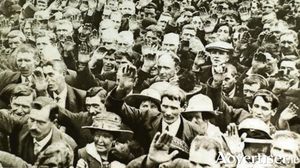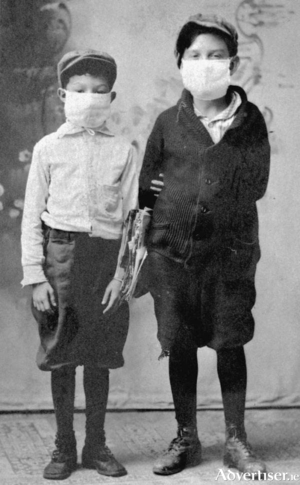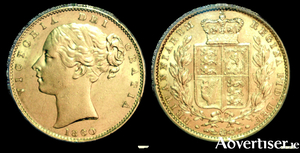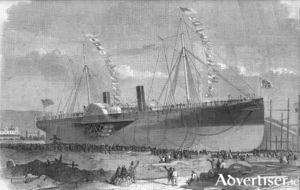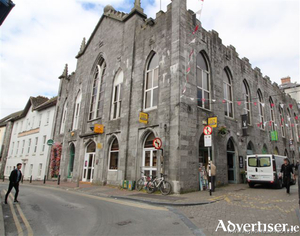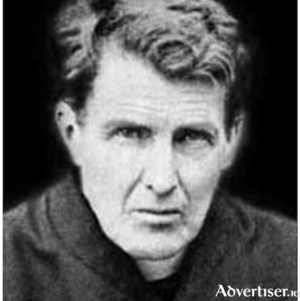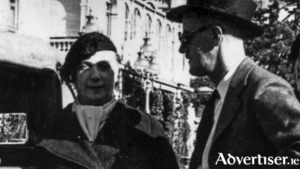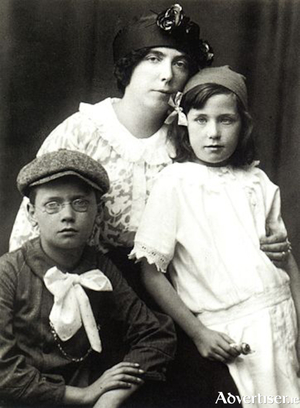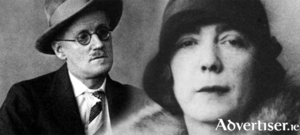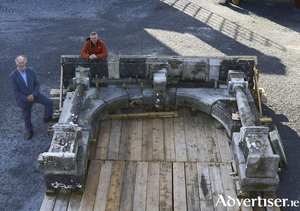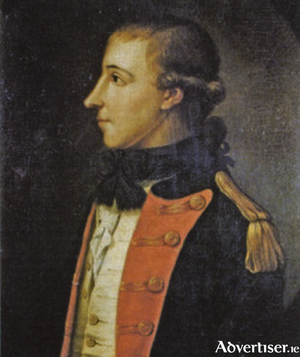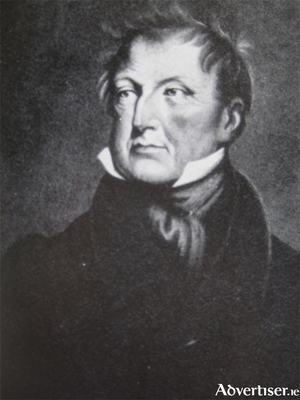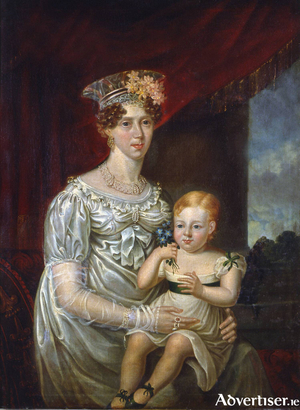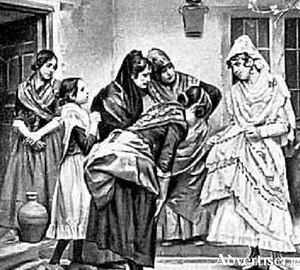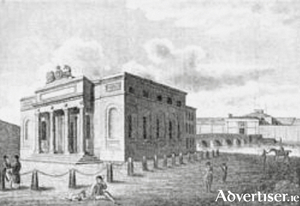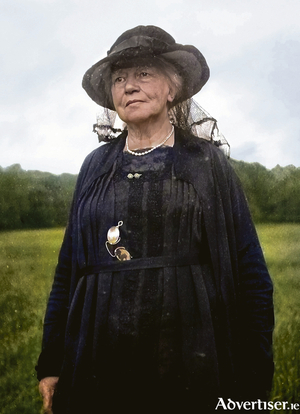Lack of social distancing aided second phase of ‘Spanish Flu’
Thu, Feb 18, 2021
[Week II. Read Part I.] The 1918 General Election on December 14 was the most significant election in modern Irish history. Following the events of World War I, the Easter Rising, and the Conscription Crisis, the whole island was caught up in fierce debate as to its future. The result was a sweeping victory for a radical Sinn Féin, which promised to establish an independent Irish Republic. The moderate Irish Parliamentary Party, which had dominated the Irish political landscape since the 1880s, was wiped out; while in Ulster the Unionist Party took power.
Read more ...‘Bed and quinine appear to be the two great safeguards.’
Thu, Feb 11, 2021
The Galway Expess was one of the first local newspapers to notice that the increasing numbers of people succumbing, some very suddenly, to the so called Spanish ‘Flu that swept across the world in the early summer of 1918, was ‘virulently infectious’. It speculated that it first reached Ireland through Belfast, and in many cases ‘entire households have been seized,’ industries have been closed, and schools ‘although children suffer less than adults, they spread infection’, have also been closed. ‘Sudden collapses are the most striking feature, the victim being struck down almost immediately.’
Read more ...The saga of the great ship continues
Thu, Feb 04, 2021
During the last week of October 1860 members of the crew of the Connaught began to return to Galway. On October 28 the first to arrive came by train ‘where a large number of people on that afternoon were at the station to welcome them back.’
Read more ...The fate of the valiant Captain John Wilson
Thu, Jan 28, 2021
We get an idea of the perilous position at sea that confronted Captain John Wilson of the Minnie Schiffer, his two-masted brigantine, laden with a full cargo of fruit and wine, as he was sailing from Marseilles to Boston, from this dramatic painting.
Following a number of engine mishaps, the PS Connaught, about one hundred miles out from Boston on its return voyage to Galway, was battling against a fire which had broken out in its engine room, and which was rapidly spreading across the deck out of control. Furthermore a leak in the ship’s bow was letting in a greater quantity of water by the hour. By the afternoon of Saturday October 6 1860, it became clear that the PS Connaught, the flagship of the Galway Line, and one of the finest paddle-steam liners of its day, was facing ruin.
Read more ...The sinking of the PS Connaught, and tragedy miraculously avoided
Thu, Jan 21, 2021
There can be no greater horror for passengers and crew than facing death on a burning ship in a heavy sea, that was sinking by its bow. Which death would you choose? Stay on board and be burnt? Or chance your luck in the waves?
Such was the choice facing 591 people as the PS Connaught was clearly losing its battle to contain a fierce fire that was rapidly consuming the ship. The newly built Connaught, the flagship of the Galway Line, had compleated a trouble-free voyage from Galway to Boston, via St John’s, Newfoundland. It landed its passengers and mail safely, and on time. The ship’s elegance was the talk of Boston. Ten thousand people visited her, admiring her sleek build, her luxury fittings and accommodation, before she sailed on her return journey.
Read more ...Galway’s heroic attempt to get into the transatlantic business
Thu, Jan 14, 2021
Reading through William Henry’s comprehensive digest of the story of Galway * from its original foundation on the banks of the Corrib to the present day, I am reminded that there was an extraordinary burst of optimism and creative energy in the middle of the 19th century despite the ravages of the Great Famine barely a decade before.
Read more ...Galway’s Pro-Cathedral, a building of some significance
Thu, Jan 07, 2021
At early Mass on Christmas morning 1842, there was a dreadful accident at Galway’s Pro-Cathedral during which 37 people were killed, and many more were injured. Known as the Parish Church, and completed just twenty-one years before, it was by far the largest Catholic church in the town, surprisingly built in preCatholic Emancipation times.
Read more ...A writer finds spiritual comfort in Connemara
Wed, Dec 23, 2020
‘The bus comes at last with a great blaze of headlights, and figures emerge from the darkness and climb aboard….’
Read more ...The long journey from Bowling Green was over
Thu, Dec 10, 2020
The Joyces finally arrived in Zurich on 17 December 1940 exhausted after weeks of torturous negotiations with the German, Vichy-French and Swiss authorities. They had sought refuge in Switzerland during World War I, now they hoped to do so again. To add to the stress of it all they had to leave their daughter Lucia behind in a psychiatric hospital in Brittany which was behind German lines. Joyce hoped that once settled in Zurich he could use all the influence he could muster to have her follow them to safety.
Read more ...Ulysses - and gun fire in Galway
Thu, Dec 03, 2020
Nora’s last visit to Galway in April 1922 did not go well. Galway, as well as the country, was caught up in a deadly Civil War. The anti -Treaty forces had occupied the Connaught Rangers’ Barracks, Renmore, while the pro- Treaty forces occupied the Great Southern Hotel. The Galway to Dublin train was regularly fired upon from the barracks. There were sporadic gun fights around the Custom House, and the Masonic hall, as both sides struggled for possession. It was a dangerous time and people were fearful.
Read more ...‘I have never loved but once in my life’
Thu, Nov 26, 2020
‘Well what do you have to say to Jim now after all our little squabbles he could not live without me for a month can you imagine my joy when I received a telegram from London a week after Jim and georgie on their way’…….wrote Nora in her unpunctuated flow of words, to her partner’s sister Eileen from her mother’s home in Bowling Green, in July 1912.
Read more ...‘The image of your girlhood will purify my life again.’
Thu, Nov 19, 2020
‘My dear little runaway Nora, I am writing this to you sitting at the kitchen table in your mother’s house! I have been here all day talking with her and I see that she is my darling’s mother and I like her very much. She sang for me The Lass of Aughrim, but she does not like to sing me the last verses in which the lovers exchange their tokens. I shall stay in Galway overnight…..’
Read more ...A chance to walk through history
Thu, Nov 12, 2020
By the 16th century Galway was a compact, well laid out town, with handsome buildings, protected by a strong wall. The wealth of the so called Tribal families, originally Anglo/Normans, built up over decades of canny, and adventurous trade, bought them total control of the municipal authorities. Loyalty to the English crown rubber-stamped their laws to keep the native Irish out of the town. They built large houses in a style that reflected their power, while meeting the aesthetic standards of their European contemporaries. Galway was a place apart from the rest of the island.
Read more ...Theobald Wolfe Tone - A hero without blemish
Thu, Nov 05, 2020
The Criminal Conversation case taken by Richard Martin against John Petrie, in 1791, the seducer of his wife Eliza, which was extensively covered in the newspapers of the time, and no doubt read with enormous enjoyment by society in both England and Ireland, nevertheless, did not go entirely in Martin’s favour.
Read more ...The ‘vicious appetite’ - the most human of all frailties
Thu, Oct 29, 2020
Mrs Eliza Martin, threw caution to the wind, and settled down to live openly with Mr John Petrie, a merchant, at his London house in Soho Square. Her flaunting of the end of her 13 years marriage to Richard Martin, a man of legendary accomplishments, and the owner of vast lands in Connemara, who was not a man to be reckoned with, left society wondering what his response would be to this embarrassment.
Read more ...‘Betrayed into ruin by the arts such as the weakness of humanity’
Thu, Oct 22, 2020
Such is the weakness of man, it seems, that even the mighty Daniel O’ Connell may have succumbed to the allures of the fair sex, committing an indiscretion in his youth, which came back to haunt him in later years when he and his wife Mary shared ‘abiding affection’.
Following the death of Daniel’s uncle, Muirís a Chaipín, their immediate financial difficulties were resolved, and they were living in his home at Derrynane House. The last six years of Mary’s Iife were probably their happiest together, and they were rarely apart despite a pamphlet published by Ellen Courtney, stating that Daniel O’Connell was the father of her illegitimate son. His enemies leapt on the story with joy, and no doubt it was avidly read by the whole of Ireland, and beyond.
Read more ...What if a man was abducted and forced into marriage?
Thu, Oct 15, 2020
Daniel O’Connell has weaved in and out of the Diary columns in recent weeks and unexpectedly he appears again, not as the great political champion that he was, but in the interesting study of Marriage in Ireland 1660 - 1925. *
Read more ...‘I could not think of marrying such a barbarian.’
Thu, Oct 08, 2020
In 1839 Catherine Cohalan, from Aughrim Co Galway, was abducted from her home by a man named James Cohalan probably a cousin. Here her seizure had been agreed by the couple beforehand because Catherine did not want to marry Michael Campbell, a man whom her father had arranged for her to marry the following week.
Read more ...Widow Wilkins and the delicate matter of her ‘breach of promise’
Thu, Oct 01, 2020
The case of Blake v Wilkins in 1817 was so eagerly anticipated that every lodging house in Galway, ‘even the humblest in the town was' was filled to overflowing.
Read more ...Lady Gregory’s ‘Book of the people’
Thu, Sep 24, 2020
Augusta Lady Gregory, writer, folklorist and great patron of the arts, who died at her home at Coole Park in 1932, reappeared during the Druid production of five of her plays each evening this week. Druid is no stranger to magic, and such is their skill that Lady Gregory (Marie Mullen) makes several appearances inviting the audience to follow her for yet another of her plays performed in different locations around her home. From the edge of Coole lake to the old stables and yards, her ghostly figure seductively beckoned. The audience followed enchanted, moved by the strange power of her deceptively simple plays.
Read more ...